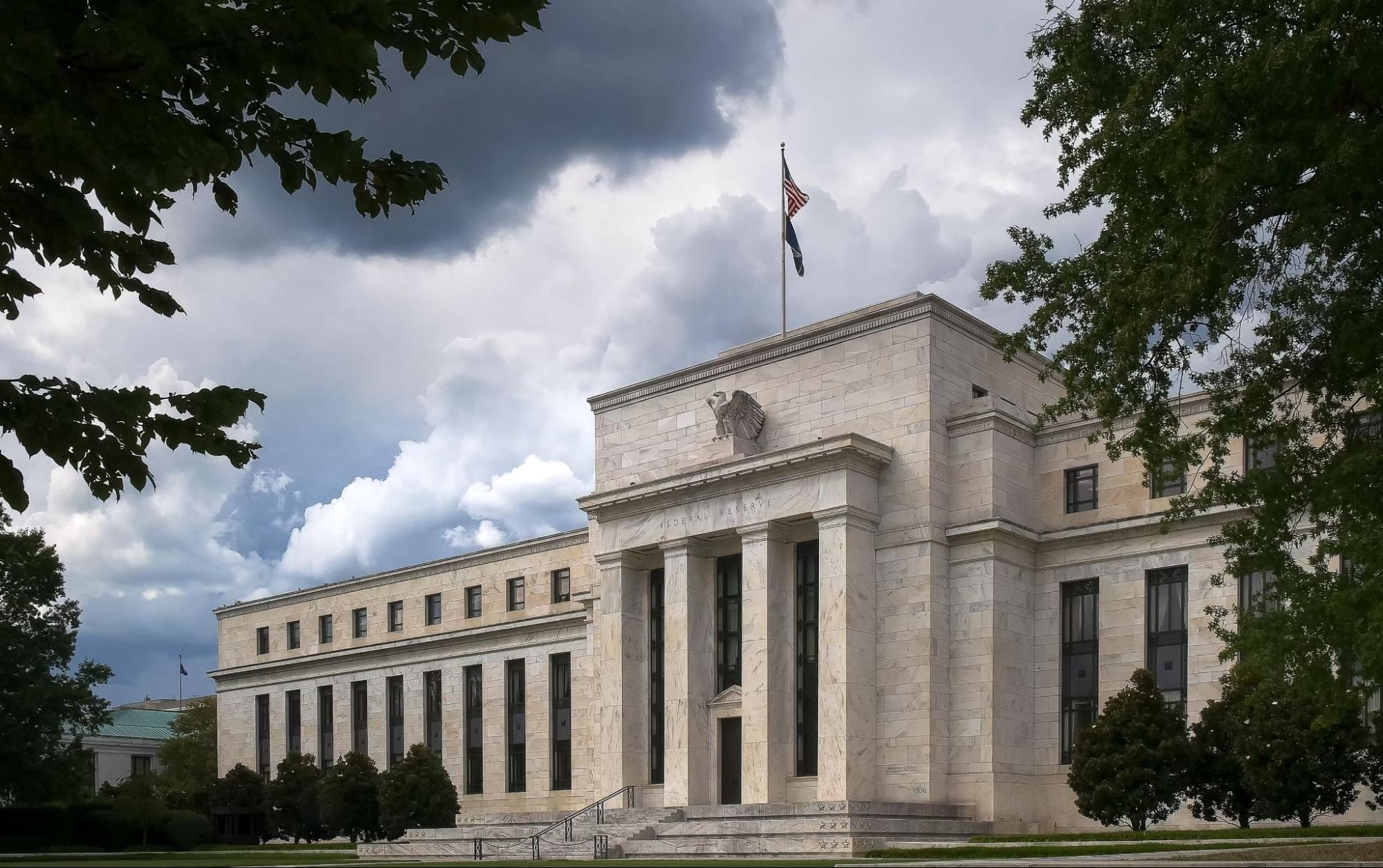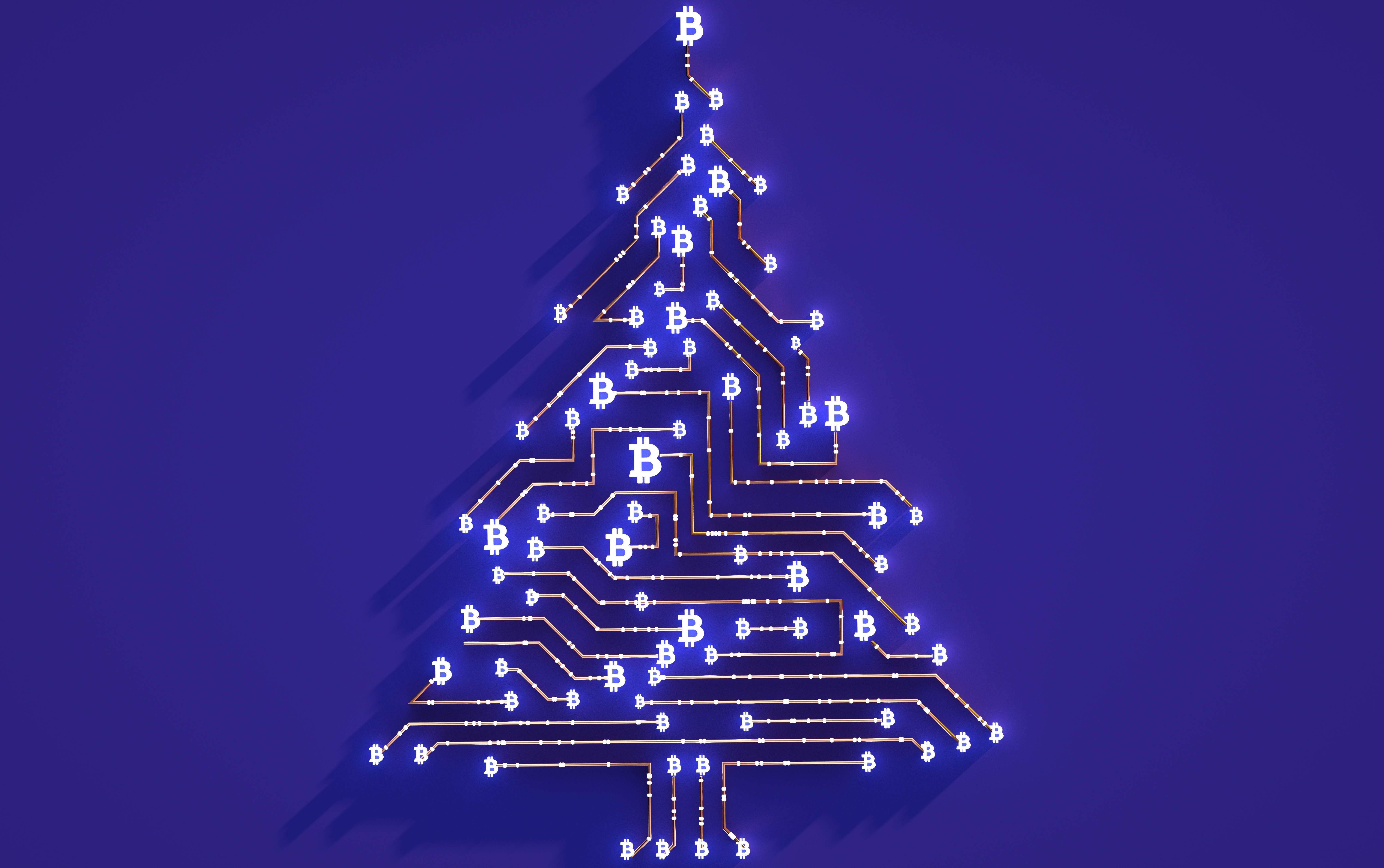Why the crypto market is struggling

The stock and crypto markets shuddered over the last week after the Federal Reserve signaled an accelerated rate-hike timetable to combat inflation. [crbellete via Getty Images]
There’s never a dull moment on the blockchain. Here’s what you need to know this week:
Crypto prices continue to struggle in 2022. The Fed’s inflation fight and unrest in Kazakhstan added downward pressure this past week.
The NFT economy is still booming. NFT marketplace transactions are off to a record-breaking start this year.
4 tips for navigating crypto down cycles. How to keep your composure when crypto prices fall.
MARKET UPDATE
Crypto markets tumble as the Fed prepares to unwind stimulus in inflation battle
For the second week, the major crypto storyline continues to be volatility. Since New Year’s Day, Bitcoin is down roughly 10% and ETH about 15% — while the broader crypto market has shed close to $1 trillion since its November peak. The economic backdrop to crypto’s recent struggles is complicated — including historic inflation, the Omicron variant’s impact on the workforce, and the Federal Reserve’s plans to unwind pandemic-era stimulus policies. There’s a lot to unpack — let’s get started.
Fed officials are balancing multiple macroeconomic threats, from surging Omicron cases to runaway inflation. In a new report, the World Bank predicts that the global economy will slow in 2022 as the Omicron variant sidelines workers, supply chain woes continue, and central banks begin winding down stimulus. Speaking to the Senate yesterday, January 11, Fed chair Jerome Powell suggested interest-rate hikes could be warranted pending inflation and jobs data in the coming months — new consumer price-index data out today may add more clarity. Powell also indicated plans to publish a report about the Fed's plans to create a “digital dollar” — as nations around the world race to create central bank digital currencies.
Why has this news impacted crypto more severely than stocks? Crypto markets are complicated and fast-moving, so it’s hard to make any conclusive statements about cause and effect. But Bitcoin’s inflation-resistant design is a big part of its narrative. On November 8, BTC hit an all time high near $69,000 — the same day the U.S. reported its highest inflation rate in forty years. More broadly, volatile asset classes like crypto and tech stocks, which saw rapid gains during the pandemic-stimulus era may, as The Wall Street Journal notes, see similarly swift reversals “in moments of market stress.”
An internet blackout in Kazakhstan also likely exacerbated Bitcoin’s selloff. Why? The country accounts for nearly 20% of the world’s mining power (second only to the U.S.’s 35%) so when political unrest rocked the Central Asian country last week and prompted internet blackouts, many miners were forced offline. Though Bitcoin’s total mining power, or “hashrate,” has declined since the blackout, it remains near all-time highs.
Why it matters… If you’re a diamond hands HODLer, crypto’s month-to-month swings probably don’t matter much. For everyone else, there are some silver linings. Last week, Goldman Sachs told investors that Bitcoin would continue to chip away at gold’s dominance as a store of value while Bloomberg analysts suggested mining’s shift from China to publicly traded companies in North America — “many of which are more inclined to hold coins, not sell them” — would boost BTC in coming years. And legendary investor Bill Miller revealed that he now has 50% of his net worth in Bitcoin and related investments: “I think the average investor should ask himself or herself, what do you have in your portfolio that has [BTC’s] track record?…The answer is: nothing.”
NON FUDDABLE
The NFT economy is still booming amid crypto volatility
Even as BTC and ETH continue to struggle, one sector of the cryptoeconomy keeps on soaring: NFTs. OpenSea trading volumes are on pace to eclipse August 2021’s record numbers, GameStop announced that it’s aping into NFTs, and an airdrop — a kind of crypto giveaway — tied to a new NFT marketplace called LooksRare has Twitter buzzing. Here’s what you need to know.
OpenSea has already seen more than $1 billion in trading volume this month — and is on pace to break its previous monthly record. Last August, OpenSea transactions totaled $3.16 billion. In the first ten days of 2022? Trading volumes have already surpassed $1.36 billion, including more than $100 million in Bored Ape Yacht Club NFTs alone. Meanwhile, top Solana NFT platform Magic Eden has logged more than $206 million in transactions and is on pace to surpass last month’s record of $486 million.
GameStop is betting big on NFTs. The OG memestock reported a net income loss of more than $105 million in its latest earnings report. But on January 6, the company announced that it had hired more than 20 people for a crypto division dedicated to blockchain-based games and an NFT marketplace for in-game goods. Its stock surged more than 20% in after-hours trading. Gaming could become a mainstream driver of crypto adoption, with top developers including Ubisoft, Square Enix, and Konami announcing NFT plans.
An airdrop from a new OpenSea rival helped drive more than $100 million in first-day sales. An airdrop is free crypto that appears in users’ wallets — it’s a popular (if potentially spammy) marketing or distribution strategy for crypto projects. On Monday, LooksRare — a new NFT resale market that aims to compete with OpenSea — sent $LOOKS tokens to wallets tied to many OpenSea users. To claim the tokens, users had to connect a wallet to LooksRare and list at least one NFT for sale. The strategy paid off: In the first 24 hours, the LooksRare Twitter page surpassed 70,000 followers and sales on the platform topped $110 million. (Heads up: some airdrops have been tied to scams, so make sure you do your research before interacting with unfamiliar tokens that appear in your wallet.)
Why it matters… When NFTs first took off last year, crypto markets were breaking records, leading many to wonder what would happen when things slowed down. One of the early lessons of 2022? NFTs may be blazing their own trail. Major launches — from LooksRare and rapper Nas’s NFT royalty experiment to the 175-year-old Associated Press’s marketplace for its news images — continue to emerge even as the biggest cryptocurrencies cool. Meanwhile, earlier gen NFTs like Pudgy Penguins have matured to the point where they’re facing new challenges — like what happens when your once buzzy NFT community begins to age? Whether or not the Penguin stans can work their issues out, NFTs continue to drive the crypto narrative in 2022.
SERENITY NOW
Four tips for enduring market turbulence
If you started buying crypto during the fizzier months of 2021, recent volatility might have left you with whiplash. Wasn’t Bitcoin just at an all-time high in November? It can be hard to stay calm when markets start to shift, but it’s a lot easier to make smart moves if you have a plan.
Keep emotions out of it. It’s okay to feel anxious, but don’t let anxiety dictate financial choices. Emotional trading can lead to badly-timed trades, like selling when prices are lowest or buying at a peak due to FOMO.
Think ahead. Buying and holding isn’t right for every asset, but during a market downturn, consider your long-term goals. Did you buy with the intention of selling many years in the future? If so, it’s probably ok to stop refreshing that tab and take a deep breath.
Look into dollar-cost averaging. Dollar-cost averaging is a popular strategy for reducing the sting of volatility and taking emotions out of trading — it involves buying a smaller amount of crypto every week or month no matter what the market is doing.
Trade within your limits. Are you planning to “buy the dip?” Remember: No matter how confident you are about a particular asset, you should never put in more than you can afford to lose. (And when in doubt, speak to a trusted and certified financial advisor.)
TUNE IN
Coinbase CEO Brian Armstrong chats with Messari’s Ryan Selkis about the future of crypto
While “NFT” was the undisputed crypto vocab word of 2021, 2022 already has plenty of buzzword contenders: Web3, the metaverse, DAOs (to name a few). On a special episode of Coinbase’s weekly Around The Block podcast, Coinbase CEO Brian Armstrong sits down with Ryan Selkis, CEO of crypto analytics firm Messari, to hash out the next wave of crypto concepts and discuss some of the major themes shaping the industry in the new year.
TOKEN TRIVIA
Which of the following is an Ethereum sidechain?
A
The Lightning Network
B
Polygon
C
Solana
D
Polkadot
Find the answer below.
Trivia Answer
B
Polygon











